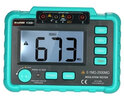- Joined
- 16 May 2024
- Messages
- 96
- Reaction score
- 1
- Country

I thought light fittings were known as blooms, is it rose? Ill stick to calling them lights.Is that what happens when you ask for bulbs for them instead of lamps?


I thought light fittings were known as blooms, is it rose? Ill stick to calling them lights.Is that what happens when you ask for bulbs for them instead of lamps?


I will likely be dong this then, if I can work out from the many junction boxes under the floor where it runs from...By the letter of the rules if you don't touch the cable between the consumer unit and the first rose/switch (depending on how it's wired) then you can do anything you like after that so if that first cable is in good condition then you can 'rewire' the rest of the circuit from there.

I have to ask. Seems like I can do it so long as its looked at and approved after, pre plastering.You have obviously decided to blunder ahead anyway, regardless of any advice provided.
This forum is not the place for your enquires.

Seems like there is much to study then first.I don't want to debate what is a new circuit, that is one for courts to decide.
The wiring needs to be so line and neutral always pass though the same hole in any ferris unit.
The debate as to using switch box as junction box, or ceiling rose as junction box can get heated, there is no right or wrong. Using 3 core and earth for switch drops instead of twin and earth gets around most problems.
The question was about loop impedance, lamp to lamp with drops to switches gave a better loop impedance, but the capacitive and inductive linking is now becoming a problem with LED lamps.
The way we wired lights could be called near enough engineering, at university we were taught about impedance and correctly terminating cables, but really that is only required with high frequency as used with radio 300 ohm ribbon and aerials, at 50 Hz we tend to ignore it.
I have smart relays, switches, and bulbs. Each has plus and minus features. Smart bulb does not only dim, but changes colour or colour temperature as well.
A discussion could go on page after page as to best method. But this is unlikely to help you.
I will likely be dong this then, if I can work out from the many junction boxes under the floor where it runs from...
I will get it looked at once done to be safe.
Thanks.

Oh, another reason I need to rewire then.Junction boxes under the floors - more alarm bells
Modern circuits, wired properly don’t have any junction boxes at all. All connections are at accessories

I cant do it myself and have a sparky come look and say yep all good?You need it professionally rewired ….

A lamp is the whole unit, we would before electric have a lamp fixed on a spigot on the wall, and we used the same with a bicycle, and steam train even when they had steam turbines for lighting, the position of the lamps and colour showed type of train and front or rear, today the spigot to mount lamps only found on heritage railways, but it seems lamp, fitting, and luminaires all refer to the whole unit, and the mantle, wick, bulb or tube refers to the bit within the whole unit which wears out with time.Is that what happens when you ask for bulbs for them instead of lamps?



 even the cheapest I can find, looking at around £150 and these are not calibrated, to hire because they need calibration is also expensive, they should be calibrated after each hire.
even the cheapest I can find, looking at around £150 and these are not calibrated, to hire because they need calibration is also expensive, they should be calibrated after each hire.No.I cant do it myself and have a sparky come look and say yep all good?

No.
The only realistic option is to get an electrician to rewire it.
or if you insist on doing it yourself properly, you will have to notify building control before starting anything, pay the notification fee which is likely be be a few £100s, and then they will want to know how you will be proving it complies with the relevant regulations, and when you can't answer that or provide the appropriate certificate with test results they may charge you a few more £100s for someone to visit and inspect the work until they have decent evidence that it's done properly - or they may just tell you to get an electrician to do it.
Why would you want a certificate?So lets say I buy a house. And I want a certificate ...
Different kind of certificate because he cannot see through floorboards and walls.I would then get a sparky to come test it and give me a certificate?

This is my point I suppose. Apart from a safety perspective, but it it all looks ok and works I don't care about the paperwork. If I ever sold it, the buyer might.Why would you want a certificate?
True, I may need to go read up on these tests and certificates and why they are needed (aside from my own health and safety)Different kind of certificate because he cannot see through floorboards and walls.
If you need to find a tradesperson to get your job done, please try our local search below, or if you are doing it yourself you can find suppliers local to you.
Select the supplier or trade you require, enter your location to begin your search.
Are you a trade or supplier? You can create your listing free at DIYnot Local
